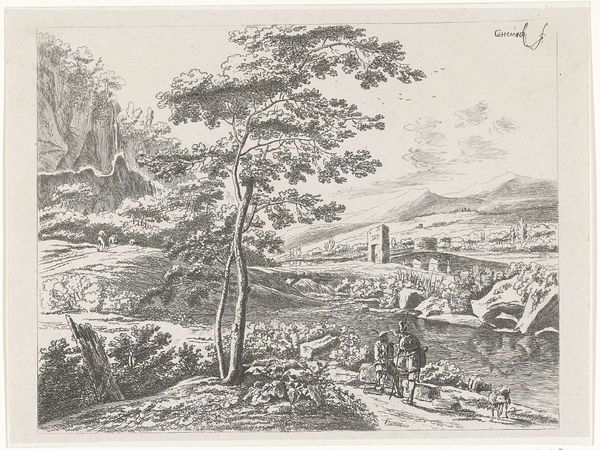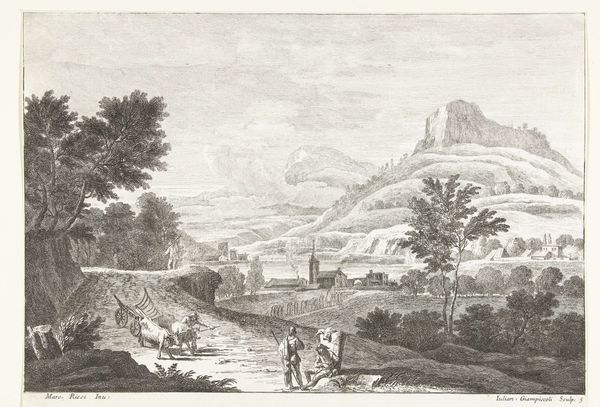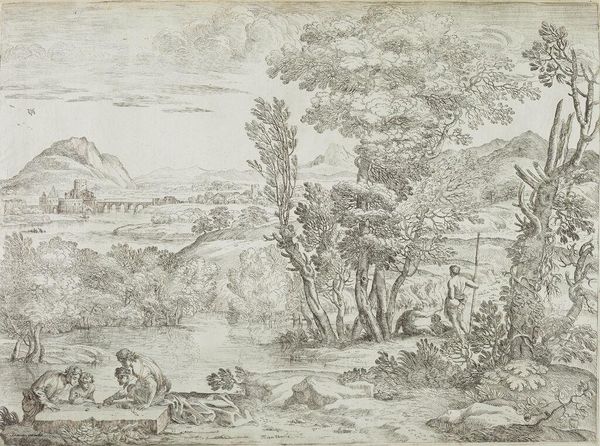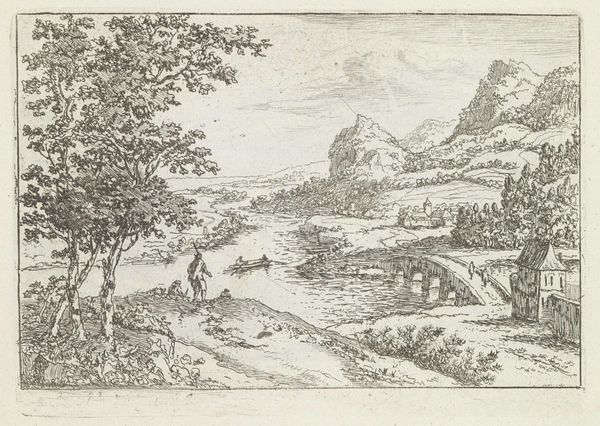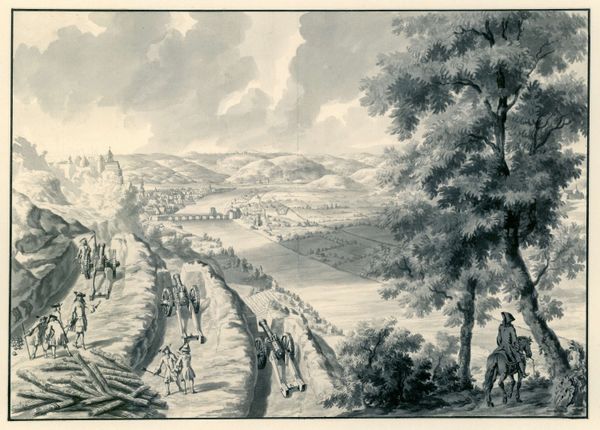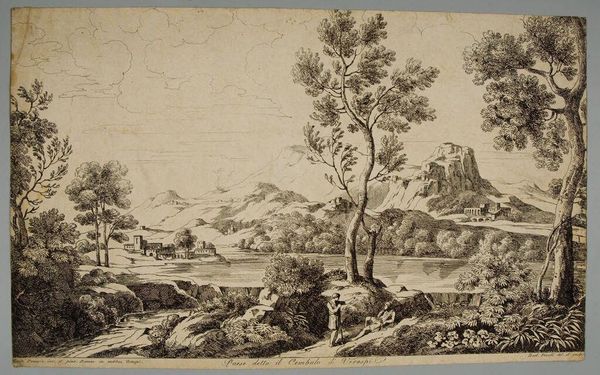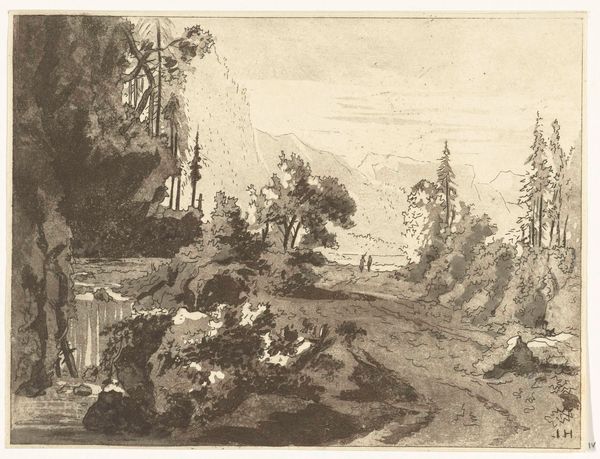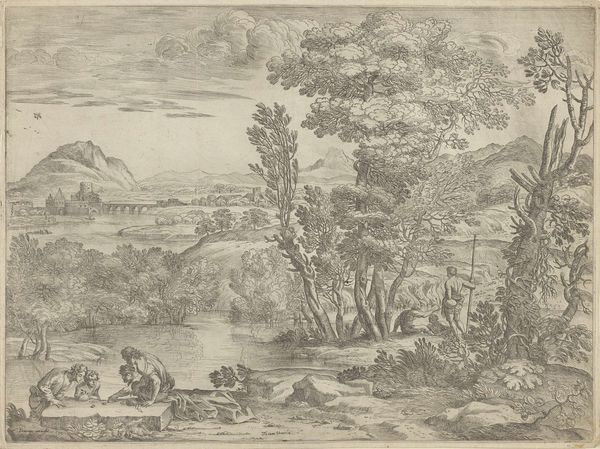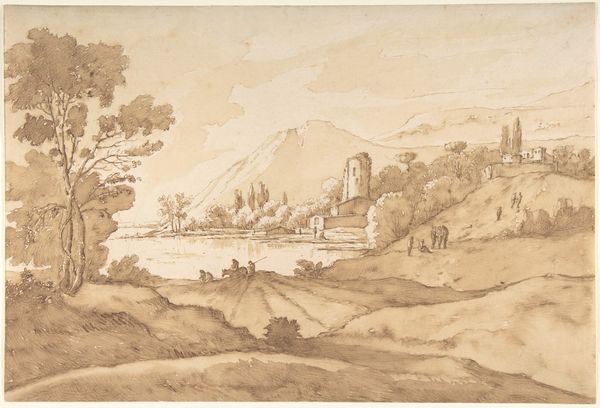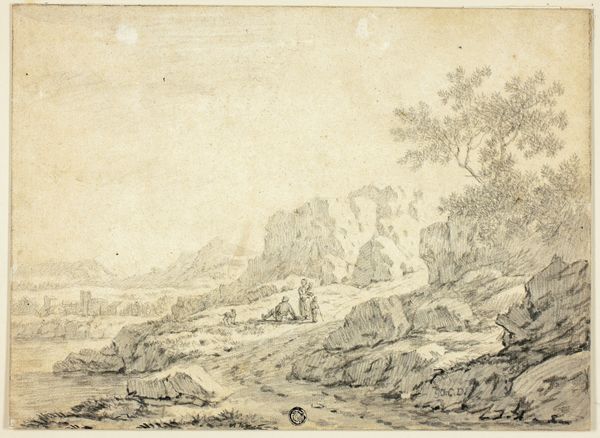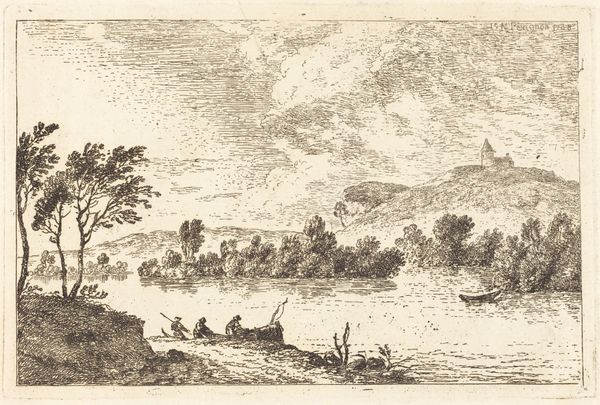
drawing, ink, pen
#
drawing
#
pen sketch
#
pencil sketch
#
landscape
#
etching
#
ink
#
pen-ink sketch
#
mountain
#
pen
#
realism
Dimensions: height 185 mm, width 259 mm
Copyright: Rijks Museum: Open Domain
Curator: Today, we're observing "Berglandschap met reizigers op ezels, die een houten brug oversteken," a pen and ink drawing completed around 1830 by W.C.E. Roelofs. Editor: It strikes me as a vision of transient labor, this group of people with donkeys burdened by supplies, dwarfed by the natural architecture of a mountain waterfall. What kind of crossing do these travelers hope to find? Curator: Observe how the lines articulate the texture of the rock face, creating an atmosphere of dramatic scale through its careful deployment of hatching. It’s fascinating how Roelofs uses the medium to express a certain dynamism, don’t you think? Editor: Indeed. But it prompts questions of who these travelers were, crossing this bridge—were they merchants? Refugees? What systems or social inequalities made their journey necessary? The backdrop almost romanticizes their hard lives. Curator: Romanticized perhaps, but also naturalized through precise, descriptive strokes. Note how Roelofs captures the particular density of the foliage in the foreground with varying tonal modulations. It anchors the eye and directs us deeper into the composition. Editor: The waterfall could represent power, nature’s indifferent forces, even cleansing, or promise. However, for whom? I’m cautious about imbuing untouched landscapes with inherent innocence, without interrogating our own gaze in that act. Curator: I understand your concern, yet I believe Roelofs is masterful in capturing the serenity of the sublime through structure and meticulous detailing. The human form appears minimized, becoming one with, not dominating the natural sphere. Editor: Well, Roelofs provokes complex thought. By prompting me to ask more of these aesthetic relationships, I see more clearly what kind of politics, if any, I'm asking the artwork to perform. Curator: Precisely, the piece, ultimately, provides a rigorous lesson in observing, distinguishing, and appreciating structure within landscape traditions. Editor: And in the power of history, not just what has passed, but what remains unsaid and what questions still beckon us, crossing the precarious bridges we create.
Comments
No comments
Be the first to comment and join the conversation on the ultimate creative platform.

